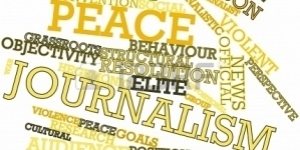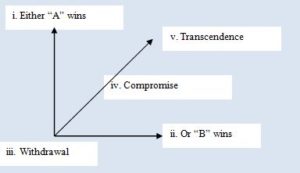(3) PRINCIPLES AND GUIDELINES FOR TMS CONTRIBUTORS
VERY IMPORTANT:
- TMS does not accept sponsored or payed posts from advertising or other businesses not in line with Peace Journalism and/or our editorial policies.
- Only pieces that abide to the guidelines presented below will be considered–which does not assure their publication.
- We do not fix/change/update links within archived articles–only their authors may do that. Given excess emails sent to TMS daily with such requests, they are marked as Spam by default.
- Likewise, the editor will not make revisions on submissions. Authors must submit only the final version of articles. If there are changes, writers must resubmit for publication on the following week.
**********************************
Deadline for Submitting Materials: Saturdays 12-Noon (GMT) to:
OUR GUIDELINES:
- An ideal piece is around 4-page long and must be sent as attachment to email in Word (.doc) format, single spaced, double between paragraphs, left alignment, font size 14, no formatting or pics or graphs, plain text only. No footnotes or endnotes. With the writer’s byline in the end (a short paragraph about her/him). It may be written in any language.
- The editor reserves the right to edit all writings for clarity, grammar and spelling, and publish at his own discretion based on content relevance. Focus on Peace Journalism parameters is a defining factor.
- The editor will not make replacements or editing. Writers must submit ONLY THE FINAL VERSION of their piece.
- By default, new materials go online every Monday at 12 p.m. (GMT); after one week they are transferred to Archives.
- These guidelines apply to all direct contributors to TMS. The editor will post articles published elsewhere on the Internet which may not be fully within these parameters but neither in conflict with them.
- Poetry/Poems: Same principles apply.
********************************
In a nutshell Prof. Johan Galtung defines Peace Journalism as follows:
Besides the usual questions, “How many were killed today?” and “Who is winning?” ask two additional ones: “What is this conflict about?” and “What are possible solutions?”
Violence is a symptom, conflict is a human trait, and peace is a process rather than an event; just like in health: pain is a symptom, disease a human condition, and cure is a multi-layered process.
Contributions to the TMS website (whether Commentary or News) adhere to five main principles, the ‘5 Cs’:
- Be Creative
- Be Constructive
- Be Concrete
- Be Compassionate
- Be Concise
-1 and 2: Creative and Constructive – Write a solution-oriented piece; focus on proposed solutions acceptable by all parties, not only on identifying problems or blaming those at fault. Peace Journalism is not merely investigative journalism, advocacy, activism or description of events/violence – neither is it biased. The TRANSCEND method has three steps:
1. Identify the goals of the various parties involved directly or indirectly in a conflict, and possible contradictions between them;
2. Distinguish between legitimate and illegitimate goals;
3. Find creative solutions to transcend the contradictions and fulfill all the legitimate goals.
Although a peace journalist/columnist/commentator is not a mediator, s/he should be aware and offer a context not offered by most of the corporate business media that produces mostly war journalism. The key aspect is ‘not biased,’ meaning, not aligned with any of the parties.
-3: Concrete – Writings should not consist only of generalities but be concrete, specific and detailed, without assuming that the reader is already familiar with the matter/theme. Always identify on the first reference of a name or place. To the famous Journalism-101 questions: WHAT? WHO? WHEN? HOW? WHERE? WHY? we add: WHAT CREATIVE SOLUTIONS EXIST? Language and its reflective use is a medium to foster ideas and creativity, adding what mainstream media most often lacks.
-4: Compassionate – The articles must be respectful of all cultures and belief systems and not hurt or offend any group; compassion for all groups involved in a conflict – at least for their suffering. There is freedom of speech, and also the right to dignity and respect. Offending someone’s cultural values or sacred beliefs is not covered by free speech. The Danish cartoons mocking Mohammed (and even more the Danish Prime Minister’s refusal to engage in a dialogue with Muslims) hurt the feelings of over a billion people and sparked avoidable violence. We wish to contribute to healing, not to hatred, pain and suffering. Compassion and empathy are concepts too often drowned in professional cynicism
-5: Concise – An ideal article has up to 1,000 words or 10,000 characters, is written in easily readable English and presents new insights, even surprises, to keep the reader’s interest. It provides a lucid and credible description of facts/events, informs, explains, puts events/actions/reactions, and so forth, in insightful context for outsiders (foreigners) and for those who need/want to know and form an educated opinion.
The good peace journalist/commentator/columnist enables the reader to think further through diverse perspectives, and to identify the causes and all the parties to a conflict – not merely the simplistic A is applying/receiving violence to/from B – “and that is awful!”
S/he is not a missionary in a political sense, meaning, not a campaigner for an institution, nor an initiative, nor an organization; the value is conflict-resolution/transformation at the core.
Why All the Violence? Five Approaches:
- easy access to arms by civilians and military;
- tradition of glorified violence in history, education, media;
- lack of ability to solve conflicts with the 3 Cs – creatively, constructively, concretely–in public and private life and in the media;
- massive and lasting structural violence;
- by justifying violence in general as natural, inevitable, often necessary and often to the good. Who is the world number 1? You guessed it.
How do we prevent violence? By negating all five above. React with violence, no solution, and you will harvest more violence in return.
How Do We Cultivate Peace?
- Through cooperation for mutual and equal benefit
- Harmony through empathy
- Traumas conciliation, clearing the past and building a future
- By solving conflicts through the 3 Cs
Feasible, possible; through peace studies, theory and practice.
REMARKS:
Deadline for Submitting Materials: Saturdays 12-Noon (GMT):
- Journalists must have a value; not as uninvolved as a piece of equipment like the mike they hold up to public officials’ mouths to tell any lies, half truths, half lies, spins, narratives, even the truths they want. Journalists resemble physicians who (ideally) are activists against disease, not merely detached report writers.
- As an editor I strive for excellence in journalism. Bad English is unacceptable, as is bad taste and lack of skills to infer, inform, communicate. As in the ‘Pedagogy of the Oppressed,’ we write for praxis, action, proaction, reaction–within our mission.
Comments/suggestions are welcome. Please use ‘Contact us.’
Thank you.
Antonio Carlos da Silva Rosa (Antonio C.S. Rosa), M.A. – TMS Editor

